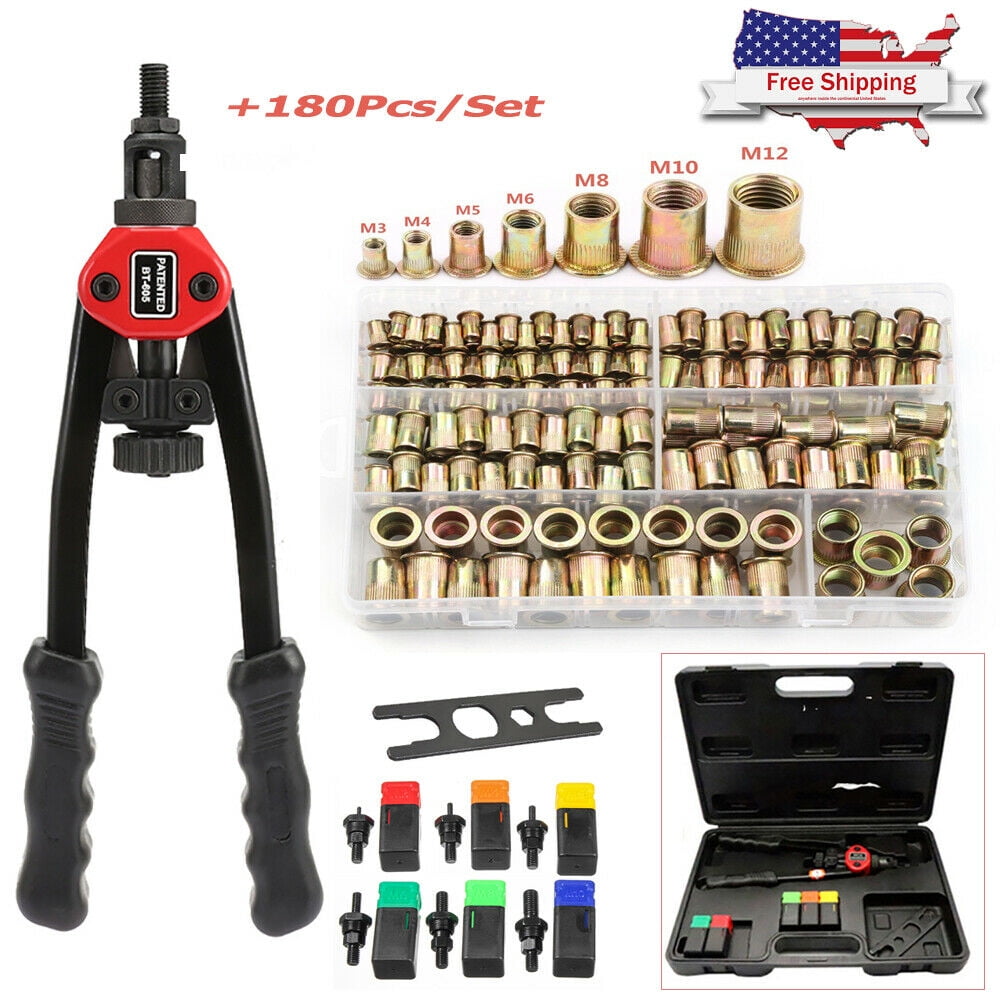

Some aluminum alloy rivets are too hard to buck and must be softened by solution treating ( precipitation hardening) prior to being bucked. Typical materials for aircraft rivets are aluminium alloys (2017, 2024, 2117, 7050, 5056, 55000, V-65), titanium, and nickel-based alloys (e.g., Monel). Such rivets come with rounded (universal) or 100° countersunk heads. Hundreds of thousands of solid rivets are used to assemble the frame of a modern aircraft. A typical application for solid rivets can be found within the structural parts of aircraft. Solid rivets are used in applications where reliability and safety count. The woman on the left operates an air hammer, while the man on the right holds a bucking bar. Riveting team working on the cockpit shell of a C-47 transport at the plant of North American Aviation.

There are a number of types of rivets, designed to meet different cost, accessibility, and strength requirements: The rivets themselves were essentially short rods of metal, which metalworkers hammered into a pre-drilled hole on one side and deformed on the other to hold them in place. Archeologists have also uncovered many Bronze Age swords and daggers with rivet holes where the handles would have been. Rivet holes have been found in Egyptian spearheads dating back to the Naqada culture of between 44 B.C. 2.8 Rivet alloys, shear strengths, and driving condition.2.1.1 High-strength structural steel rivets.However, it is much more capable of supporting shear loads (loads perpendicular to the axis of the shaft).įastenings used in traditional wooden boat building, such as copper nails and clinch bolts, work on the same principle as the rivet but were in use long before the term rivet was introduced and, where they are remembered, are usually classified among nails and bolts respectively. To distinguish between the two ends of the rivet, the original head is called the factory head and the deformed end is called the shop head or buck-tail.īecause there is effectively a head on each end of an installed rivet, it can support tension loads. In other words, the pounding or pulling creates a new "head" on the tail end by smashing the "tail" material flatter, resulting in a rivet that is roughly a dumbbell shape. On installation, the rivet is placed in a punched or drilled hole, and the tail is upset, or bucked (i.e., deformed), so that it expands to about 1.5 times the original shaft diameter, holding the rivet in place.

The end opposite to the head is called the tail. Before being installed, a rivet consists of a smooth cylindrical shaft with a head on one end. Brown (December 2014).Ī rivet is a permanent mechanical fastener. Riveters work on the Liberty ship SS John W.


 0 kommentar(er)
0 kommentar(er)
